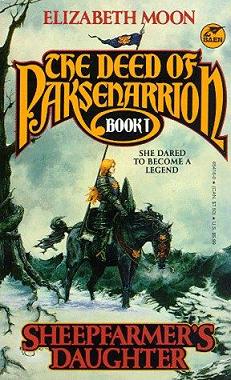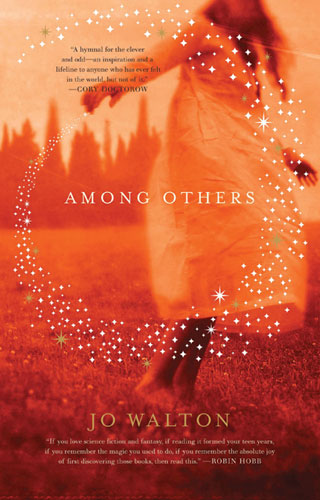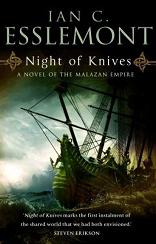
Sheepfarmer’s Daughter
Elizabeth Moon
506 pages
published in 1988
Sheepfarmer’s Daughter was Elizabeth Moon’s first published novel and is now available from the Baen Free Library as a sample to get you to try her other work. I got it to have something to read in those stolen moments where it’s too much hassle to dig a paperback out of my bag, but I can get to my mobile. Sheepfarmer’s Daughter was the ideal book for this: not overtly complicated, easy to read in small chunks without missing much of the plot and engaging enough to keep reading.
I’ve only read one Elizabeth Moon novel before this one, A Sporting Chance, a science fiction adventure story that was decent enough but nothing special. From all I had read about her other novels, they seemed much the same so until now I’d never really sought out her books. But it’s hard to argue with free books and people I trust had been praising Sheepfarmer’s Daughter, so when I needed something new to read the choice was easy.
Sheepfarmer’s Daughter is the first in a trilogy called The Deed of Paksenarrion, which Elizabeth Moon allegedly wrote after she was introduced to Dungeons and Dragons by friends of her and got annoyed by the way it handled paladins, to show what real paladins were like. A paladin is “a holy knight and paragon of virtue and goodness”, as Wikipedia calls it and in D&D it’s one of the character classes you can play. What exactly Moon disagreed with I’m unclear about, but there certainly is some D&D influence visible in the fantasy world she created. The other influence on the series was Moon’s own background as an US Marine, giving her a somewhat more realistic idea of warfare than many other fantasy writers have.
Paksenarrion “Paks” Dorthansdotter is a, well, sheepfarmer’s daughter, who doesn’t want to be a sheepherd all her live and so runs away to become a mercenary soldier in duke Phelan’s Company when her father threatens to marry her to one of their neighbours. As in many other pseudomedieval fantasy worlds, soldiering is much more of an equal opportunities profession than it has been in real history and Paks is far from the only woman in her chosen outfit. Both the duke and most of the mercenaries in his Company are also far more nobler than was probably true historically, again not unusual in fantasy. The same also goes for the oh so convenient natural contraceptive herbs mentioned awkwardly in an early chapter. All these conventions are needed for Moon to tell the story she wants to tell.
Together with the other recruits Paks is taken to the company’s headquarters and turned into a soldier, which means a lot of drilling, arms instruction and exercise, much of which no doubt has been coloured by Moon’s own experiences as a marine. What I liked is that while it was clear from the prologue that Paks is destined for great things, she’s not preternatural good at soldiering, but has to be taught the basics just like anybody else. She has potential and her instructors know she’s one of the best of the new recruits, but still needs training.
But then she’s accused of assaulting an officer. Which she did, but only because she was resisting being raped. Beaten to a bloody pulp, she’s thrown unconscious in jail and it’s only when her sergeant visits her and realises that no way was it possible for her to be so battered when her supposed victim has just some bruises and scratches and something is wrong, that somebody believes her story. Things don’t get any simpler however when it turns out her assailant was himself drugged by some sort of magic potion. It’s the first overt sign that Paks is somebody special and makes clear, to the reader at least, that somebody is willing to go to a lot of trouble to get rid of her.
For Paks herself this is just an unpleasant incident and a reminder that the mercenary life has its downside as well. She emerges tougher from her ordeal, but doesn’t lose her trust in her fellow soldiers and willingness to help her comrades in arms. A new trial by fire is her first battle; this being a medievaloid world, this consists of battle phalanxes clashing with spears, followed by Roman style sword chopping, much holding of lines and such, as well as the occasional cavalry attack and rain of arrows. Again Paks does well but not spectacularly so, when she gets wounded in battle but doesn’t notice really until afterwards.
She and several other wounded are travelling back to their sponsoring city when they are attacked by mercenaries in service of the Honeycat, one of the less than nice mercenary leaders. This is again a disguised attack on Paks herself, but one that again only the readers recognise as such. This and other incidents however do convince duke Phelan to go after the Honeycat, with several other northern mercenary companies (all of the noble honourable persuasion) and southern city states joining in. This campaign dominates the second half of Sheepfarmer’s Daughter as Paks grows in her abilities and importance.
As a fantasy story sheepfarmer’s Daughter has few real surprises, which in this case didn’t matter to me. What I liked here was the execution of a familiar plot, which was much more low key and “realistic”, for lack of a better word, than many another post-Tolkien, Post-D&D fantasy novel. Moon spends a lot of time on the less glamorous aspects of soldiering: drills, ditches, latrine duty which a quick google tells me a lot of people disliked, but I actually enjoyed reading about. It makes it more realistic, as does the relative lack of spectacular magic and non-humans: there are dwarfs and elves in Paksenarrion ‘s world, but they’re only mentioned in passing here.
Moon is not as cynical as e.g. Glen Cook is in his view of the mercenary life, though not viewing it through rose tinted glasses either. While the attempted rape of Paks is shown as an aberration in duke Phelan’s company, it’s clear that other outfits are less bothered by that sort of thing. I’m not too wild about the use of (attempted) rape as a plot driver to be honest, due to its overuse as a “motivator” for both female heroes or as something for their boyfriends to avenge. It’s handled reasonably well here, but I’d rather not seen it all the same. Apart from that, this was a solid fantasy story, well told and entertaining. Nothing that you haven’t seen earlier perhaps, but there’s more to life than novelty.

